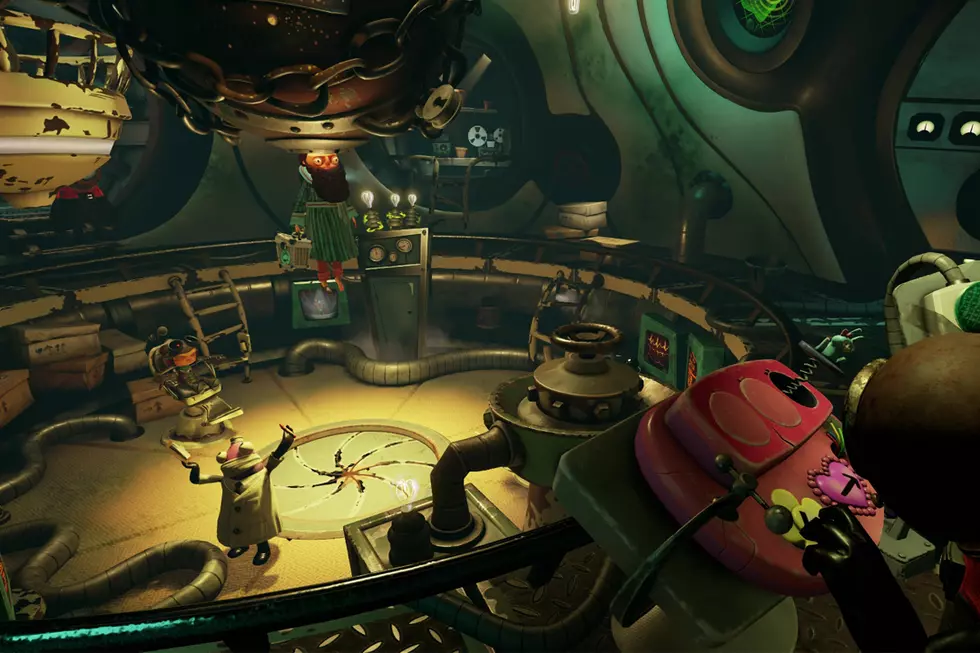
Tales of Xillia Review
It has been a good week for fans of role-playing games with side-scrolling combat. While we have recently got our hands on the stellar Dragon's Crown done by the development teams at Atlus, Namco Bandai has released their thirteenth release of the fan-favorite JRPG "Tales" series, Tales of Xillia. In its Japanese debut, Tales of Xillia shattered the sales records of its predecessors. But as we all know, impressive sales do not necessarily guarantee an excellent game. Does Tales of Xillia address and fix some of the inherent problems of the Tales franchise? Or is it just another cliche JRPG with some side-scrolling differentials?
At face value, Tales of Xillia is a little bit of both. We haven't had our hands on a PlayStation-exclusive Tales game since the relatively-bland Tales of the Abyss in 2006, and Xillia definitely tries to make amends. This Tale tries to do many things different this time around, but there are a few negative nuances about our experiences with Xillia that really made it feel like we were simply playing more of the same.
In typical Tales fashion, Xillia has to do with the duality and overall conflict existing between the two worlds of Rieze Maxia and Elympios. The people of Elympios are a technologically advanced society that siphons the life force of nature's spirits in order to provide Spyrix, an energy-based form of power. The people of Rieze Maxia coexist (mostly) with the spirits of nature and are able to use magic by harnessing the energies of these spirits (fans of the Tales series will recognize some of their favorites, such as Undine and Efreet).
You can choose between the main characters of either Jude Mathis or Milla Maxwell to play as, but the overall plot and gameplay remains the same, regardless of your choice. Tales has an excellent habit of letting you specifically play as any party member you'd like to focus on and have that character be the one you control on the field map. So, if you prefer Alvin over both Jude and Milla, you are free to play as him both in battle and as you explore.
Jude is a martial arts-practicing, medical student (we swear we are not making this up), who encounters Milla, the reincarnation of Maxwell, the godlike spirit-deity that controls all of the spirits of Rieze Maxia. Milla finds out that the governments of Rieze Maxia are in conflict with each other, and one side is using Elympios technology to drain power from the planet's spirits. Milla attempts to intervene in mortal affairs by trying to arbitrarily remove the Elympios technology. Upon being drained of her godlike powers, Milla (with Jude), must travel Rieze Maxia, re-establish Milla's dominion over the spirits, and must stop King Nachtigal from taking over the world (and destroying it), with his Elympios-based weaponry.
Within Tales of Xillia's plot, there are numerous JRPG cliches to mention. This is particularly noticeable from within the games cast: the dorky, clumsy male lead who tags along for an adventure with little-to-no reasoning; the socially-awkward, emotionless female; the badass, cool dude in a trench coat; and the ditzy, cheerful, female magic user were all expected and are all accounted for.
Despite the stereotypical archetypes of Xillia's cast, we must mention Xillia's superb voice acting. While we said before that subpar voice acting was one of the main things wrong with the JRPG genre, Tales of Xillia really stepped it up in terms of its music, voice acting and sound effects. There is a plethora of dialogue in Xillia, and while the vocabulary of the in-game canon and many of the translations could have used some work, the entire experience is enjoyable due to such a solid cast of voice actors.
Tales of Xillia excels as an RPG in terms of its fighting system and leveling mechanics, but its graphics is where it becomes extremely hit-or-miss. Some parts are absolutely stunning, especially with its series staple of cel-shared, anime-inspired characters and fully rendered backdrops. But a vast majority of it looks extremely dated. Even though Tales of Xillia was released during the end-years of the PlayStation 3, its graphics fail to compare to most of the system's library. For example, Valkyria Chronicles is a cel-shaded, tactical RPG, also with anime-inspired characters, but Xillia's graphics do not even come close, and Chronicles was released more than five years ago.
For a PS3 title, much of Tales of Xillia's graphics look like they were developed right next to Tales of the Abyss, which was a PS2-exclusive. This becomes very noticeable on the field map, where the open area is impressive in terms of its immense level size, but populated by bland types of filler. Expect to see recycled/color-swapped enemy models, trees, canyons, etc. used again and again throughout your adventures on Rieze Maxia. It seems that graphical quality was sacrificed for the sake of level size.
Tales of Xillia's bread and butter comes in the form of its gameplay. Namco Bandai took the signature combat design of the Tales series and tweaked it with a few new features. The double artes/techs are done when two characters perform special moves at the same time. With Xillia's link system, you can assign another character to move with your player-controlled character on-the-fly and have them do as you please (such as having your linked characters attack from both sides).
Linked partners have different abilities and strategies depending on your settings and which characters you have linked: Jude can automatically heal you each time you hit the ground, and Alvin can shatter defending enemies. This leads to an interesting change from our former experiences with the Tales' fighting systems where we are constantly switching linked characters in order to optimize battles in our favor.
Despite the blandness of the field maps, they are randomly generated with pieces of treasure and materials for you to find throughout your adventures. Even if you return to an area you already cleared, you will be surprised to see that the enemies have respawned and so have the treasures, but they are not always in the same spots where you found them before. This helps for those wishing to farm materials and increase the types of equipment available to their party. While there are numerous fight encounters, many of them can be finished within seconds.
The stat-distribution and leveling systems of Tales of Xillia are relatively different from its predecessors, and help exhibit the attribute allocation you are able to do with each of your characters. For example, you can take an initially strong-but-slow character, like Alvin, and focus on increasing his dexterity and agility, so that he is more nimble and can combo in more hits. Series' trademark skills are learned by a combination of points put into multiple statistics, so expect to learn magic-guard by putting points into both elemental resistance and defense. After a few hours, we felt that we were in full command of our characters and continued tweaking them to battle-ready perfection.
Ultimately, the advancements Tales of Xillia attempts to make, in conjunction to the already-solid core gameplay of the series, outweigh the graphics' detrimental effects. Much of Xillia's lore, story and characters are cliche, but fortunately, it is all still quite enjoyable. The Tales series remains to have one of our favorite battle systems in the entire RPG genre, and Xillia's changes bolster it greatly. If it weren't for its substandard graphics, Xillia could have been the defining RPG of this current generation of gaming consoles. Unfortunately, much like its mythos, the Tales series and perfection always seem to be two worlds apart, ever so close.
This review is based on a retail copy of Tales of Xillia for the PlayStation 3.

More From Arcade Sushi









